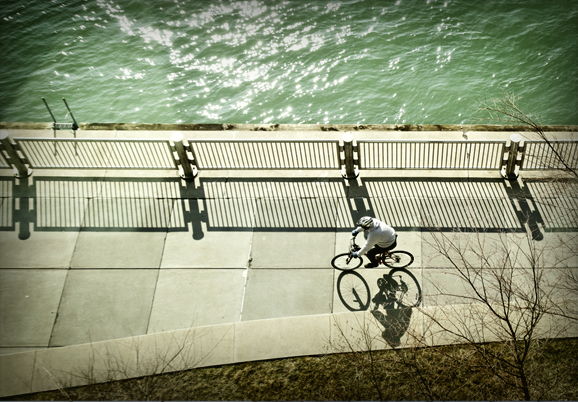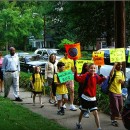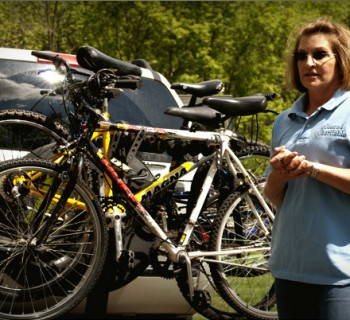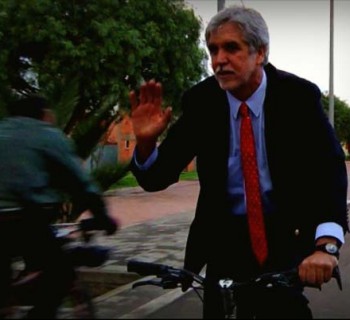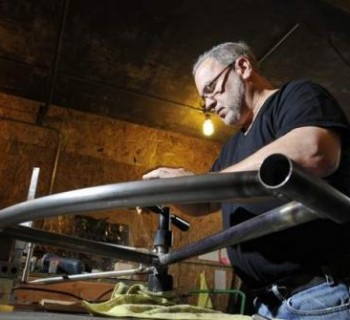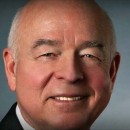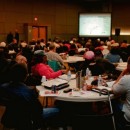DETROIT — Elected officials can’t just pass a law that makes residents of their state or municipality live more healthily, but there’s plenty they can do to encourage better lifestyles in their communities.
Making sure the sidewalks are clean and free of litter like broken glass promotes walking, especially with dogs, says Liz Blondy, owner of Canine to Five Metro Detroit Dog Day Care and Boarding.
Striping bike lanes onto roadways reminds motorists that cyclists might be sharing the road and that makes it safer – and more attractive – for everyone, says Steve Roach, a Grosse Pointe Park resident who actively advocates for cycling .
Ensure children can get to school safely if they walk or bike by designing, constructing and maintaining road systems and routes that offer safe alternatives to driving, says Megan Thomas, director of Michigan’s Safe Routes to School program.
Initiatives like those are largely local programs, but the legislature, too, has a role in creating healthier communities with better connections between their neighborhoods and business districts, says Jon Switalski, D-Warren.
“You can’t tell people what to eat or how to live but I think you can educate. You can encourage individual behavior and give incentives to do it.” ~ Jon Switalski, D-Warren.
But can such communities be created by law?
“In a perfect world, you can attempt to do that,” Switalski says. “The implementation of it is what I’ve found to be extremely difficult.”
He offers as an example Gov. Rick Snyder’s proposal last year to track children’s obesity rates, a suggestion made with the goal of improving children’s health.
“But there’s been a huge backlash to that just in privacy concerns,” Switalski says. “You can’t tell people what to eat or how to live but I think you can educate. You can encourage individual behavior and give incentives to do it.”
He points to public pressure on schools, for example, that has led to some districts removing soda pop and other less-than-healthy drinks from vending machines and improving the nutritional content of school lunches. Still, none of that was done by law.
Arnold Weinfeld, the director of Strategic Initiatives and Federal Affairs at the Michigan Municipal League, doesn’t believe healthy, connected communities can necessarily be directly legislated. But elected officials and city administrators, for example, can work toward them in other ways.
“I think what we can do and what we’re trying to do is incent communities to do these kinds of things,” he says.
Zoning codes and ordinances are where he starts. He recommends communities look at the kinds of development they currently allow in which areas and whether the zoning will allow the community over time to become a more connected, walkable place.
“For instance, does your community allow for mixed-use, commercial-residential property that goes up instead of out?” he asks. “Do you allow for shops, restaurants or clubs to have sidewalk seating?”
At the state level, he says, communities that are more walkable should be scoring higher in their applications for economic development and transportation monies. And similar criteria could be used to judge applications for funding for downtown improvements, he says. “Those are ways, I think, to reflect the kind of philosophy that we’d like to see moving toward in these programs,” Weinfeld says.
Like others, he believes transit-oriented development could help foster the principles of connected communities as well. If communities in southeast Michigan move forward with light rail, high-speed rail or improved bus service, some proposals could come for development near the stations and stops.
“Again, I think it’s a mix. I don’t think you can legislate the transit-oriented development but I think you can incent it and educate as to why it’s important we do that,” he says.
Some programs do receive direct funding that is determined by the legislature of Congress. The Safe Routes to School is one of those.
Funding currently is provided in the federal transportation bill and sent to the states, which then distribute money that is used for education and construction, Thomas says.
“The big money that comes from the federal government is the money that helps repair the infrastructure. That’s the legislative piece of it,” Thomas says.
But that funding is subject to the political will of Congress. “And I think at the start you have to educate residents, local officials and even state officials as to why we need to have connected communities. It’s what people are looking for,” she says.
Roach has worked on that with the League of Michigan Bicyclists. In the last couple years, the group has celebrated the passage of Michigan’s ban on texting while driving, for example, and this year is at work to require safer passing distances for motorists when there are cyclists on the roadways.
“I think that by promoting things like that, we make it more friendly and make people feel more comfortable doing it,” Roach says. “To the extent that you can make people feel comfortable doing the activity, that will increase the activity.”
Roach’s suburb is well-designed for non-motorized transportation. With business districts on either side of residential areas, most Park residents are within three-quarters of a mile of restaurants and shops. The waterfront parks, however, require crossing busy Jefferson Avenue.
Still, the city leaders are encouraging people to ride, walk, skate or otherwise get to the parks without cars, says Laurie Arora, a member of the city council. For the second year, the “No Engine Initiative” will reward people who arrive at parks and are not in cars.
Each time people enter one of the parks between May 26 and June 27, they get a raffle ticket which is then part of a drawing for prizes at the end of the program.
“I’m not sure there’s a way to legislate getting people out of their cars, but I think there’s certain ways to encourage it,” Arora says. “We can provide some funds for building infrastructure. That’s fully within our authority.”
Do you think your community could benefit from legislation or changes its zoning laws? Tell us where you’re from and how in the comments below.


